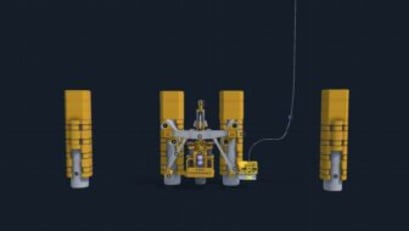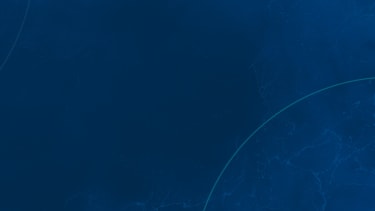Remote subsea capping installation when surface access is restricted
In the rare event of a subsea well control incident, conditions on the water's surface can become hazardous - marked by surface boil, elevated Volatile Organic Compound (VOC) levels, and unacceptable Lower Explosive Limit (LEL) readings. These scenarios may require exclusion zones of up to 500 metres, making direct intervention at the wellhead unsafe or impossible.
The Offset Installation Equipment (OIE) is a purpose-built system that allows one of OSRL's capping stacks to be installed from a safe, remote location beyond the exclusion zone. Designed to operate in depths from 75 to 600 metres, the OIE enables operators to deploy a capping stack from a large construction vessel positioned outside hazardous areas.
The system, which weighs 234 tonnes and is stored at our facility in Trieste, Italy, requires a suitably equipped vessel for mobilisation and deployment. The OIE includes a buoyancy-controlled carrier, hydraulic winches, air ballast tanks, and a fine-positioning cardan joint. These components enable controlled handling and alignment of heavy equipment, such as a capping stack, even on an inclined blowout preventer (BOP). Movement and installation are managed remotely using an ROV, which powers and operates the integrated control system. The mooring features provide stability and precision, allowing the carrier to be manoeuvred safely around the subsea site.

Interactive 3D equipment models
Select the equipment below to find out more and explore the interactive 3D models of its set-up.

OIE Main Overview
In the unlikely event of a subsea well control incident, the Offset Installation Equipment (OIE) allows installation of one of the OSRL Capping Stacks from a safe offset distance.

OIE Carrier
In the unlikely event of a subsea well control incident, the Offset Installation Equipment (OIE) allows installation of one of the OSRL Capping Stacks from a safe offset distance.
Equipment list
-
- Main frame
- Bracings, supports
- Cardan joint, including soft landing system
- ROV interface panel
- ROV emergency intervention panel
- Ballast tanks
- Buoyancy foam
-
- Winches
- Tensioning system
- Mooring lines
- Drag chain
-
- Control container
- Workshop container
- Deck stands
-
- Compressor
- Piping and deck hoses
- Long and short umbilical
- Winches
- Overboard fairleads and chutes
- Umbilical termination heads
-
- ROV
- 0IE-specific hydraulic power unit (IHPU) skid
- IHPU interface frame
-
- Towing steel wire
- Towing boat deck equipment
- Towing lines buoyancy
-
- Transport pallets
- Transport containers
-
- Test cables
- Dummy stab plate with connectors
- Test console
- Test hydraulic power unit
-
- Erection stand
- Main frame assembly aid
- Working platforms
OIE FAQs
-
The OIE system is stored at our Trieste base in Italy and is maintained for rapid mobilisation. Deployment timing will depend on vessel availability and transit time.
-
The OIE is designed to operate between 75 and 600 metres sea water (msw).
-
Due to its 234-tonne weight and deployment method, the OIE must be mobilised using a large construction vessel with appropriate lifting and handling capabilities.
-
Yes. The OIE is designed with adaptable payload capability and can support a variety of subsea response tools in addition to capping stacks.
-
The OIE forms part of our subsea capping (and OIE) and containment service, which is available to all OSRL members as an enhanced membership coverage option.

Upgrade your membership today.
Invest in preparedness and resilience.
Adding the Subsea Well Response service to your existing membership can further strengthen your capabilities, improve response efficiency, and better manage operational risks.
Simply fill in the form, and we'll get in contact with you.
If you would prefer to call us, pick up the phone to speak with our Preparedness Solutions team. We look forward to talking with you!
+44 (0)23 8033 1551
Regional numbers:
Asia Pacific
+65 6266 1566
Americas
+1 954 983 9880


